Campus Conservation
 |
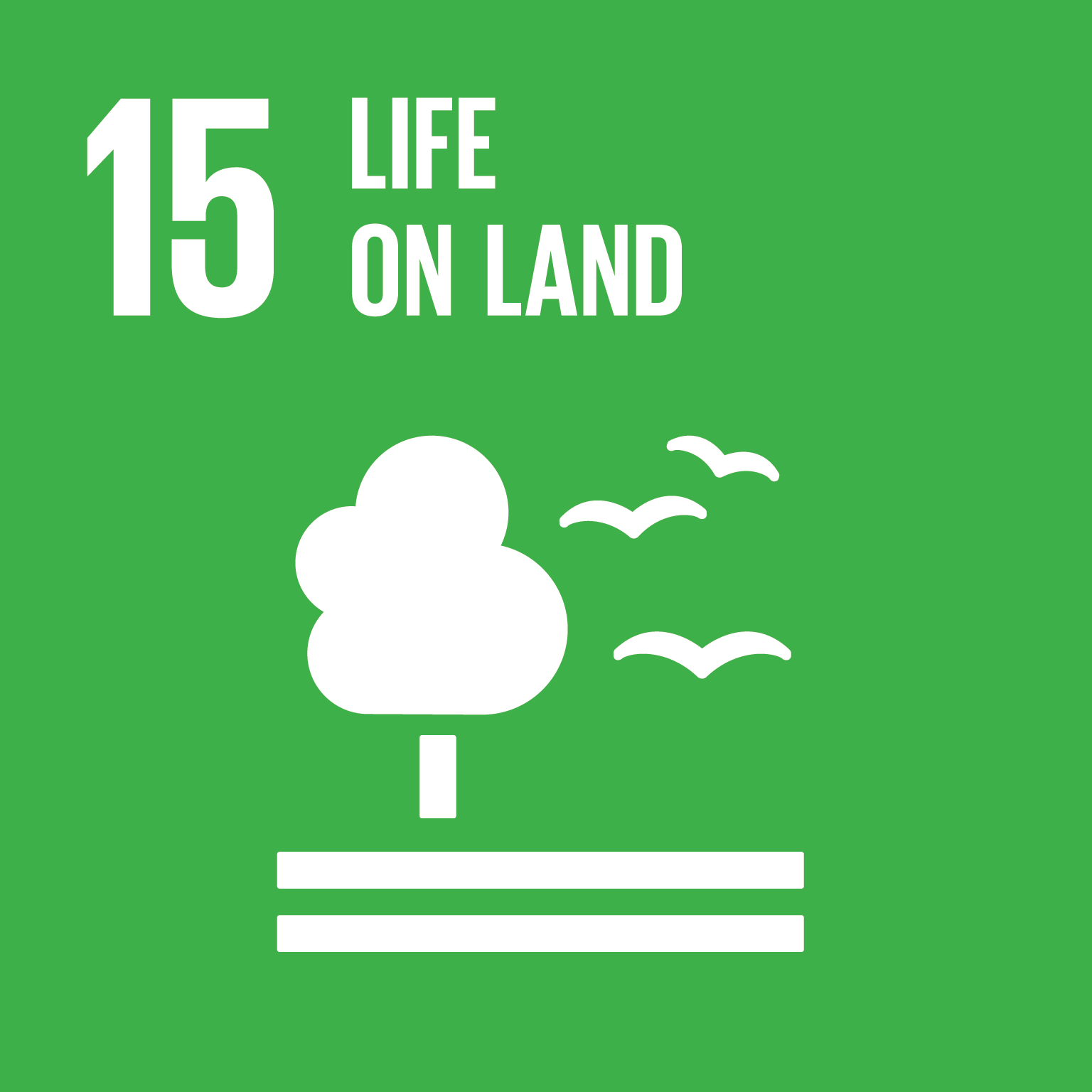 |
Campus Conservation
 |
|
|
The terrestrial and aquatic ecological conservation map in our univeristy. The parts in blue color are water areas (five surface water bodies in total) with very rich biodiversity.
|
|
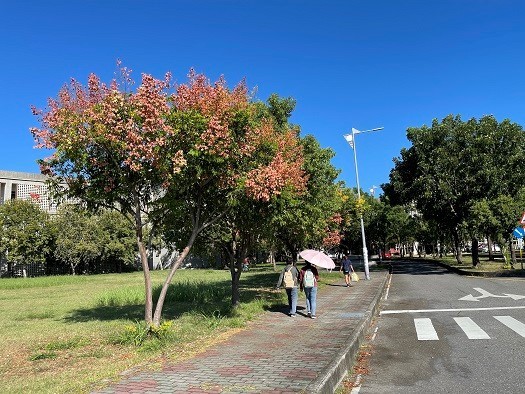 |
 |
|
The arbors in the campus are mostly native species or endemic species. They provide habitats for living thing and conserve water quality and volume of water.
|
University Lake No. 1 in our university (area: 22,931m2) contains abundant aquatic biota like fish and aquatic bird. Fishing and catching are not allowed.
|
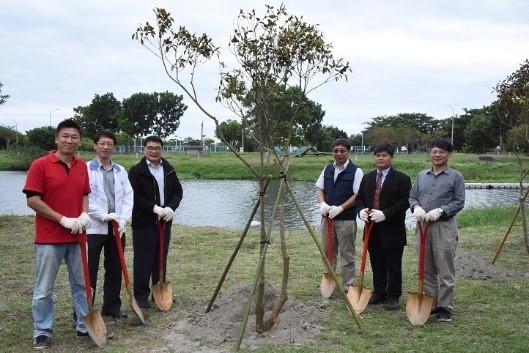 |
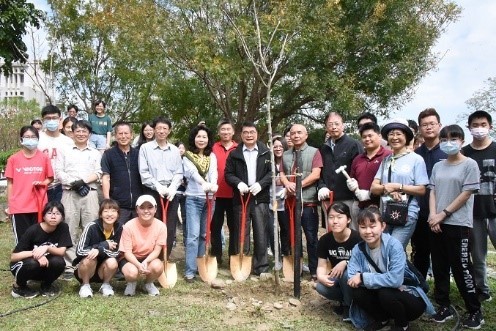 |
|
Continue planting trees in the campus - golden bolly gums
|
Continue planting trees in the campus - integrating with the course of general education for pink shower trees planting
|
-
The area of the two campuses in our university is 712,956m2 in total; among it, the land area is 95.9% and the water area accounts for 4.1%.
Our Zhiben Campus contains five water bodies, including University Lake No.1 (also called Jingxin Lake), University Lake No. 2, central axis wetland, detention basin, and irrigation canal. The total area of the water bodies is 32,128.90 m2. In City Campus, there is a landscape pond with an area of 186.27 m2. Therefore, the water area in the two campus is 32,315.17 m2 in total. The water area accounts for 4.5% of the total area of the two campuses while the land area acounts for 95.5% of the total area of the two campuses. -
We have abundant terrestrial and aquatic ecology at the campuses in our university. The conservation actions of animals and plants carried by our university meet the relevant regulations of Wildlife Conservation Act in our country. Our university also provides and enhances animal and plant conservation education to and among our students. The following diagram demonstrates the conservation strategy of campus creatures implemented by our university.
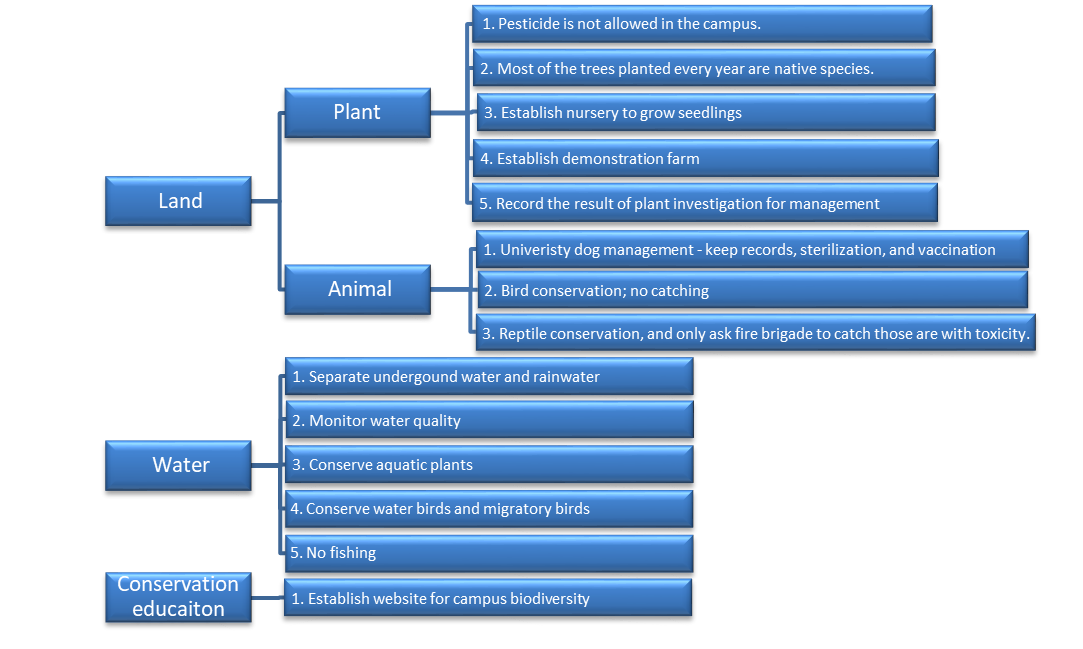
NTTU Campus Creature Conservation Strategy Diagram
Terrestrial plant conservation
-
No herbicide, insecticide, and pesticide shall be used for the maintenance of trees and grass at the compus in our university in order to conserve biodiversity at the campus. Lawn mowing shall be carried out with push lawn mowers to protect living things and maintain water quality in the drainage ditch as well as keep the soil in the campus uncontained. In addition, all the trees in our campus are always healthy without being infested by plant disease and pest.
-
Our university applied to Taitung Forest District Office, Forestry Bureau for free 2760 native species nursery stocks in 2009-2011. All the nursery stocks have grown into big trees, and we become a university in the forest. Currently, we still continue planting trees every year. Last year, 4 trees of golden bolly gums were planted while 12 pink shower trees were planted this year. Moreover, the tree planting was integrated into the course. Students dug out holes to plant the trees personally as well as carried out watering and maintenance for one semester to enhance the engagement of students and implement plant conservation education.
|
|
Type of the tree planted
|
Number of trees
|
Date of planting
|
Remark
|
|
1
|
Golden bolly gums
|
4
|
109.11.11
|
Donated by alumni
|
|
2
|
Pink shower trees
|
12
|
110.3.9
|
Signed Letter of Intent on Afforestation with Green Hope Spring Company
|
-
We built a nursery next to Teachers College in our university to cultivate nursery stocks, grass, and flowers. We also composted fallen leaves in the university as base materials and fertilizer for the nursery.
-
Department of Life Science and Department of Applied Science established a demonstration farm with an area of around 1.2 hectare together in the west side of College of Science and Technology near University Lake No. 2 to cultivate medicinal plants, like Indian Epimerdei, for students to carry out topic research.
-
7. Our university established a Campus Ecology Data Collection Team in February 2021 to investigate the arbors, shrubs, birds, reptiles, and insects in the campus. It is expected to complete the database creation next year, and we will also create university website, establish QR code and compile it into a book to enhance campus creature conservation education.
Terrestrial animal conservation
-
Loving animals is the philosophy and implementation item in our university as a green international university. Based on the concpet of focusing on both love and responsibility, our university established MGOCSDC in 2013 to investigate, record, file all the dogs in our campus for management. Besides, they were implemented sterilization, microchip, and vaccination (please refer to the following table for detailed records). All the university dogs are loved by students in the campus, and it also provides educational opportunity for students to learn to respect life and learn animal conservation.
Aquatic biota conservation
-
We separate the domestic sewage and rainwater drainage in our university. Domestic sewage is collected through pipelines and diverted to the sewage treatment plant for biological treatment without being mixed into rainwater drainage. It can avoid polluting the surface water body and damaging fish and birds in and on the water area. Domestic sewage is collected and diverted to the sewage treatment plant and purified with biological treatment until meeting the standard of effluent. The water body then can be discharged to prevent water body pollution and damage on living things.
-
To maintain the water quality of surface water bodies in the university lakes and the function of ecological conservation, the water quality in Jingxin Lake will be sampled every six months (2 monitoring spots on upstream and downstream for one sample each) for testing. The testing items include pH value, water temperature, dissolved oxygen, electrical conductivity, suspended solid, chemical oxygen demand, biochemical oxygen demand, nitrite nitrogen, nitric nitrogen, Kjeldahl nitrogen, total nitrogen, total phosphorus, and coliform group. They must all meet the standard of Tier B terrestrial surface water body quality.
-
The water quality in the water area at our university is excellent, and we have abundant aquatic biota. It attracts migratory birds to rest and creates an ecological system along with other fish, water birds, migratory birds, and aquatic plants. Swimming, fishing, and catching any fish are forbidden in our university. We provide aquatic biota a very good habitat and conservation environment.
Additional link
-
Campus Biodiversity at NTTU:https://sites.google.com/a/gm.nttu.edu.tw/campus_biodiversity/
-
Summary of uniersity dog registration at National Taitung University in 2021: https://dga.nttu.edu.tw/p/405-1008-112062,c8821.php?Lang=zh-tw
Click Num:
Share


